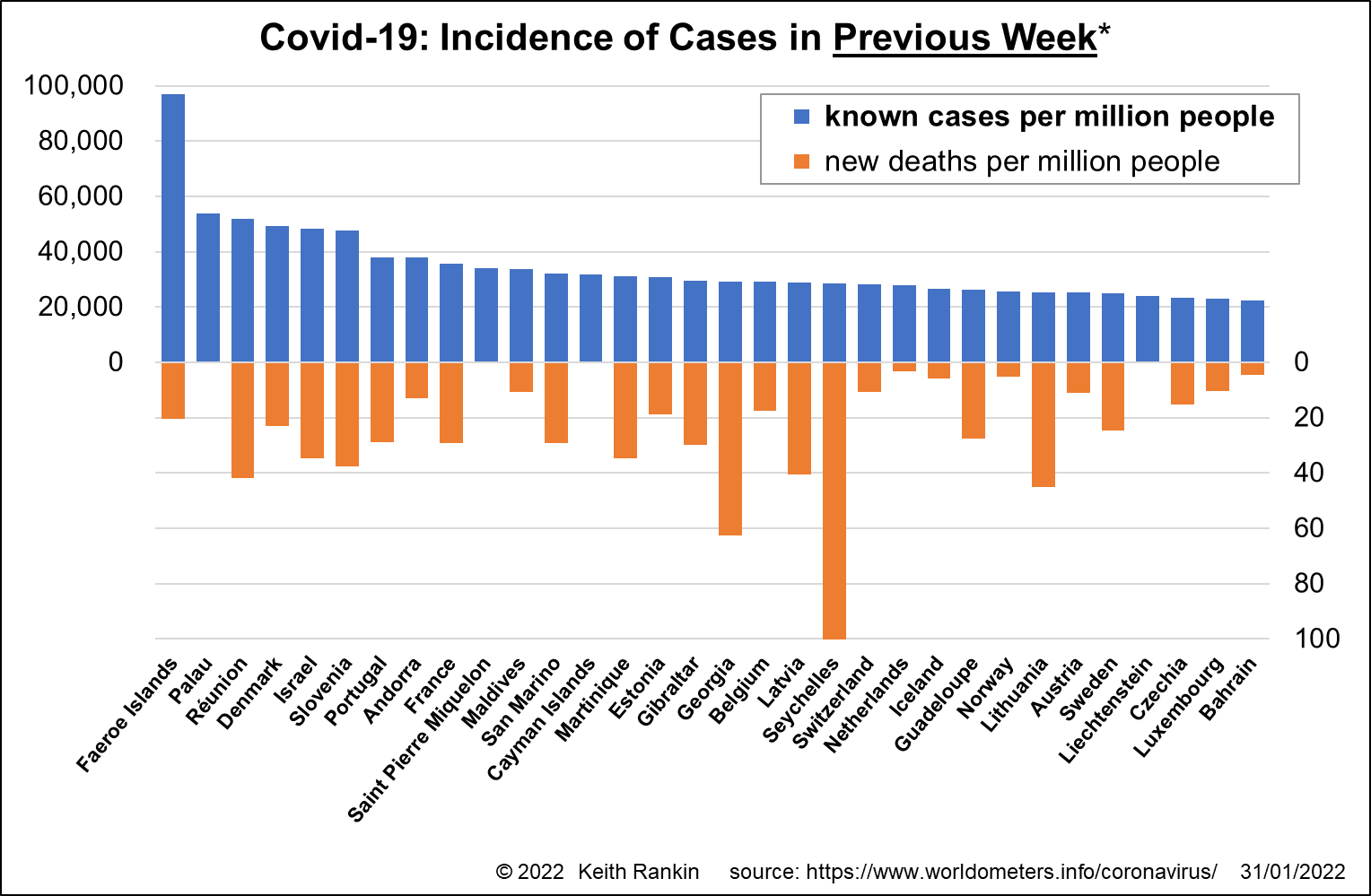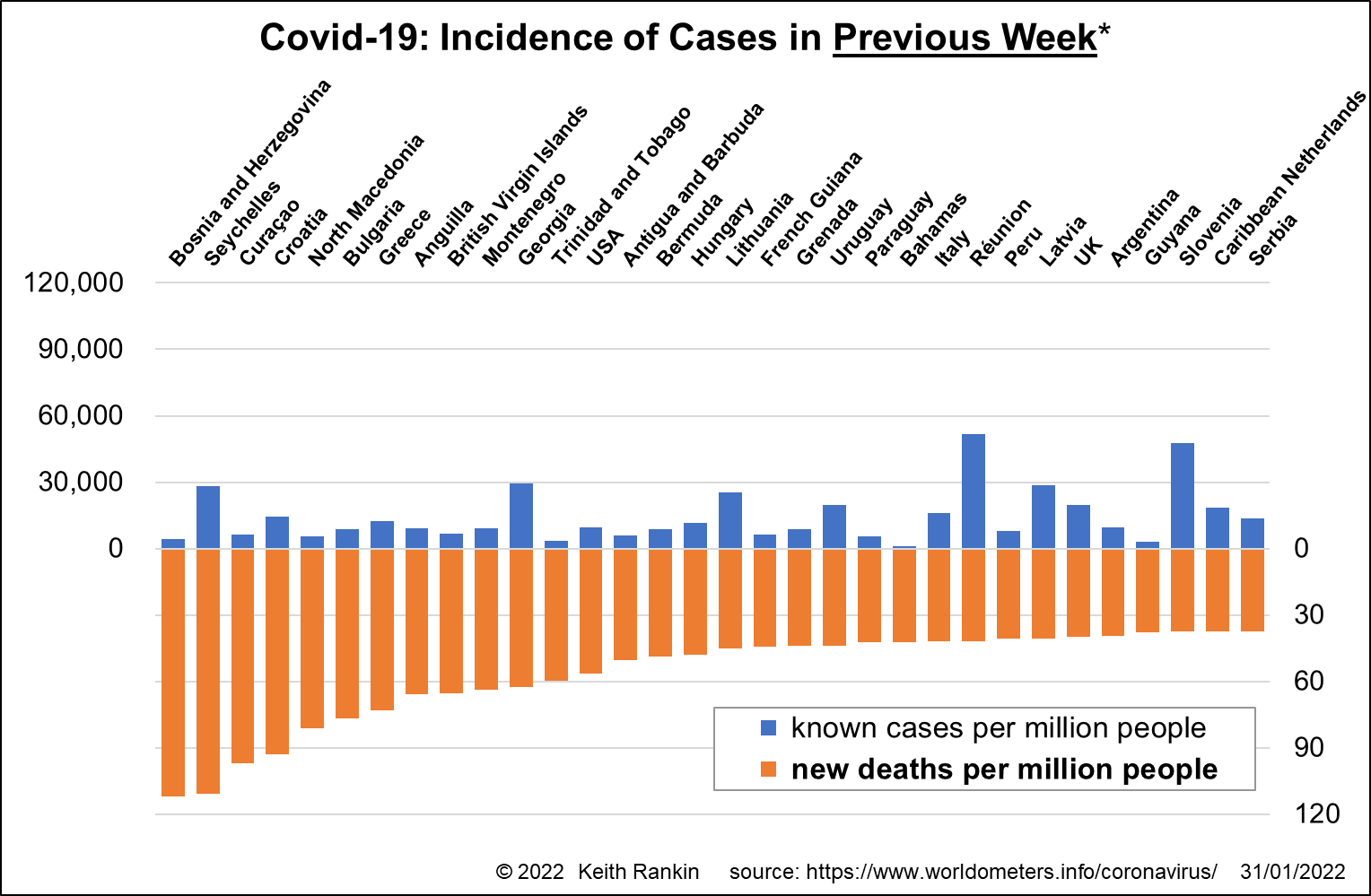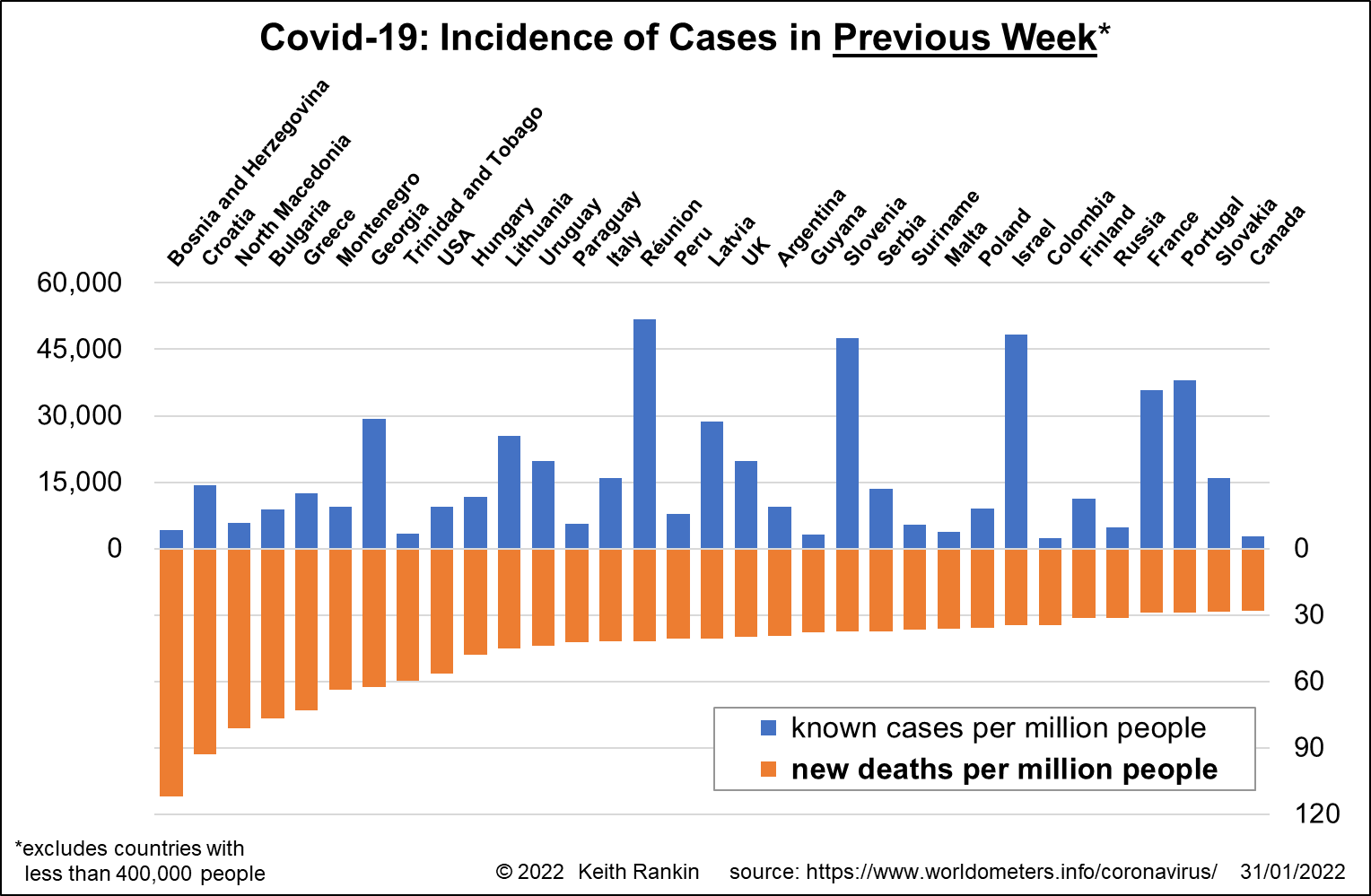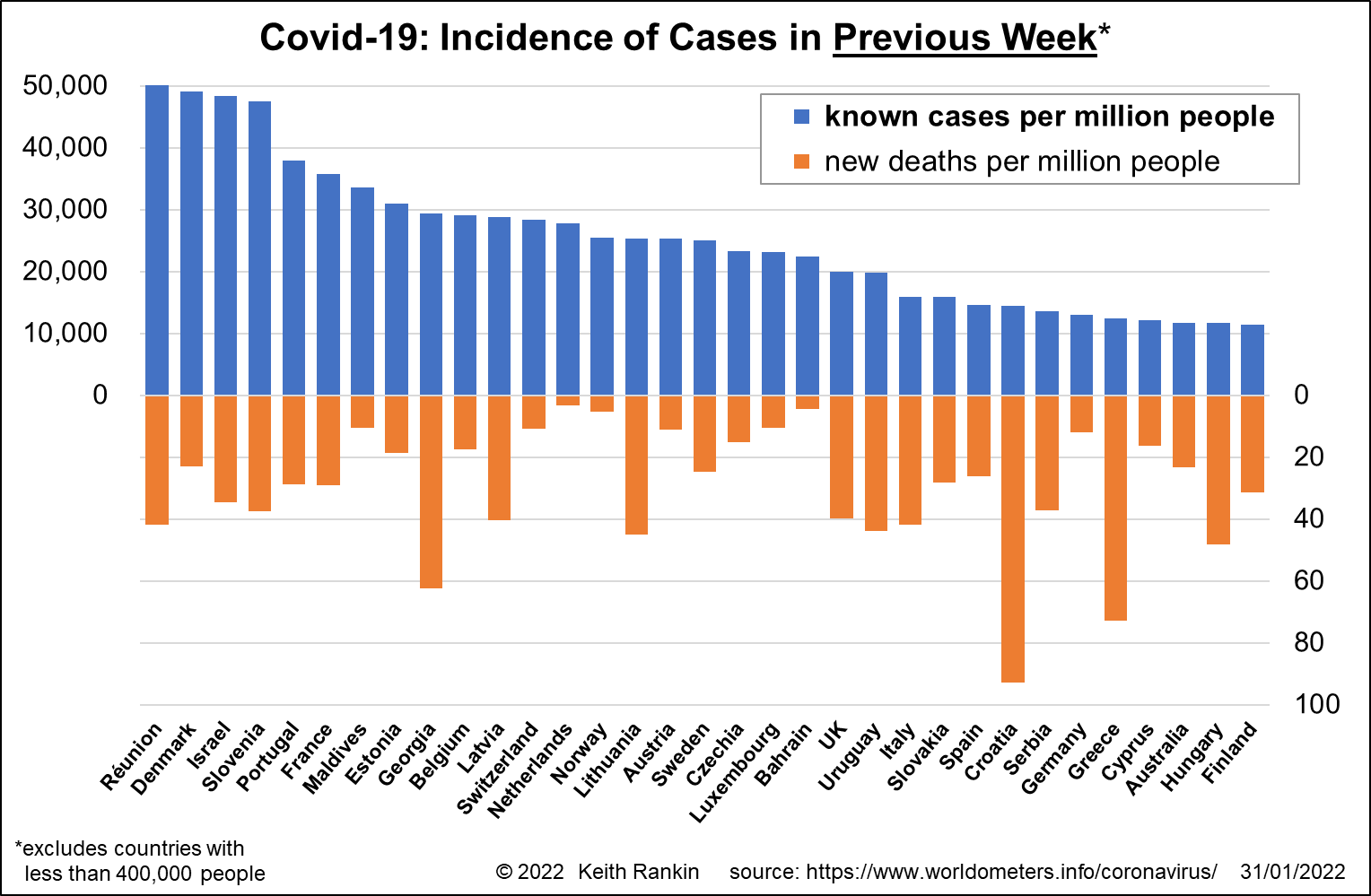Analysis by Keith Rankin.
Including the small countries


As for most of the second half of 2021, the small principalities and territories (and former territories) of the European colonial powers show up highly in these charts of covid casualty countries. One of the great untold stories of Covid19 has been the impact of SARS-Cov2 (and the generally affluent travellers who carried it) upon these often fragile polities. Our political obsession with ourselves, the countries most like ourselves, and the very populous countries of the world, has made this tragedy – especially in the Caribbean Islands – all the more tragic due to our lack of acknowledgement of them. (We will next encounter a number of these depleted countries in the Birmingham Commonwealth Games, this year.)
We note that some other little countries (and quite big countries too) don’t make these charts, due to underreporting. One really big country that has fallen under the radar is Pakistan, with an estimated 800,000 covid deaths (ourworldindata; Economist estimates), nearly thirty times its reported toll.
It is important to note that estimates – such as the one above for Pakistan – are ‘excess deaths’ arising from all aspects of the pandemic, including people who died as a result of the social, economic and epidemiological effects of the anti-covid restrictions.
These excess deaths can be labelled as deaths FROM covid. The government-reported covid mortality statistics measure people who died WITH covid. The data for people dying with covid is commonly used as a proxy for people dying OF covid. (Some people dying with covid – and increasingly so during the highly infectious but relatively mild Omicron variant – are people who would have died anyway.)
Only countries with more than 400,000 people


An important feature of the latest death statistics is the return of South America, a region in which much of the immunisation immunity of 2021 will have waned substantially.
Otherwise, Eastern Europe’s substantially unnoticed tragedy continues; including the covid tragedy in Russia (estimated 1.1 million deaths from Covid19) and Ukraine (estimated 200,000 deaths in a country of 40 million people).
Of particular interest to the New Zealand establishment and New Zealand media – in our western liberal democracy (albeit, like others, an increasingly frayed democracy) – is the covid experience of other liberal democracies our size or bigger. A number of these countries appear on this second pair of charts, including Australia and Canada. Indeed, most western liberal democracies appear on one or both of these charts. (Indeed, I think that New Zealand and Ireland are the only such countries not to feature.)
The last chart, which sequences countries by cases, includes most of West Europe’s social democracies. (Iceland is too small for this chart, but is on the very first chart, above.) By and large these data are a result of high rapid-antigen testing revealing that just about everyone has been exposed to covid; though few who were not already sick have become sick from Omicron. The two most prominent of these countries – Denmark and Israel – are both massively vaccinated, and, as a result, have hospitals that are underwhelmed by covid. (Facemasks have achieved nothing; vaccinations have been critical.) Denmark is abandoning all restrictions – including mask-wearing – while reported case numbers are at their peak.
My sense is that most of these countries are currently experiencing their final significant outbreak of Covid19.
The two countries which are on the ‘deaths chart’ but not on the ‘cases chart’ are United States and Canada. These two countries are particularly notable in that their high death numbers are clearly much more than a statistical artefact. The very cold winter may be a factor. So will lower vaccination rates in the United States. So will be the high continued numbers of Delta cases in the US – including my brother-in-law who got very sick from Delta in January. (New Zealand still has Delta cases, but most of those sufferers will be under the belief that they have the less-severe Omicron; Delta was ‘so last year’!)
Re Canada, I have this comment from my contact in Winnipeg, after having shovelled a metre of snow from her back yard: “Our new [Manitoba] Premier Stefanson has decided ‘the government can’t protect everyone’ so she has discontinued rapid testing for the majority of ill citizens and says that ‘if you’re sick you probably have covid, so stay home’. Therefore, there are no actual counts of active cases. Some news reports earlier this month estimated (based on modelling) the active cases at ‘over 40% of the population of the province’, but we have no way of knowing.”
What will happen in New Zealand is highly uncertain; we can say the same for Western Australia. One possibility is that New Zealand will get a ‘perfect storm’ of covid in the winter months – June to August – when our lack of immunity due to natural exposure (to covid and to previously endemic ‘cold’ coronaviruses) could become apparent. (We had an RSV ‘cold’ epidemic last winter, and have never been told the toll of that.) If we pay attention to last November’s deadly second Delta outbreak in Europe – and, seemingly, nobody does pay attention to that any more – we see that the driving force was waning immunity from both natural exposures and vaccinations. It was that late Delta outbreak that brought to our attention the need to boost our erstwhile high ‘full’ vaccination status.
Fortunately, if the perfect storm scenario does take place, it will most likely be the less severe Omicron variant. Nevertheless, we can expect Covid19 death rates comparable to those Canada is facing at present.
***
Keith Rankin (keith at rankin dot nz), trained as an economic historian, is a retired lecturer in Economics and Statistics. He lives in Auckland, New Zealand.








